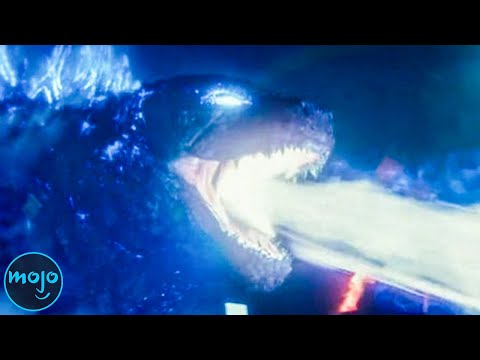The Real Meaning Behind Godzilla: More Than Just a Giant Monster
When you think of Godzilla, what comes to mind? A giant monster stomping through cities, shooting laser beams from its mouth, and causing chaos? That’s what most people see when they watch movies like Godzilla: King of the Monsters (2019), Godzilla vs. Kong (2021), or even Godzilla Minus One (2023). But there’s so much more to this legendary creature than meets the eye.
In reality, Godzilla is not just a monster—it’s a symbol, a warning, and sometimes even a protector. Let’s dive into the origins of Godzilla, explore its deeper meaning, and understand why it continues to captivate audiences worldwide.
A Brief History of Godzilla
Godzilla first appeared in Ishiro Honda’s Gojira (1954), produced by Toho Co. Ltd, a Japanese film company. Since then, Godzilla has become one of the longest-running franchises in cinema history, rivaling icons like James Bond and Dracula. There are 28 Japanese Godzilla films, two major American adaptations (Gareth Edwards’ Godzilla in 2014 and Godzilla: King of the Monsters in 2019), countless video games, comic books, and TV series like Godzilla Singular Point (2021).
What makes Godzilla so enduring? For starters, nothing can kill him! In nearly every movie, armies throw everything they’ve got at the beast—tanks, missiles, planes—but nothing works. Only one weapon, called the Oxygen Destroyer, managed to take down Godzilla in the original 1954 film. Even then, Godzilla keeps coming back, bigger and stronger with each appearance.
Godzilla as a Metaphor for Nuclear Weapons
At its core, Godzilla represents humanity’s fear of nuclear destruction. To understand this, we need to look at history. During the 1940s and 1950s, the United States conducted numerous nuclear tests, including the devastating bombings of Hiroshima and Nagasaki during World War II. These events left deep scars on Japan, both physically and psychologically.
After the war, nuclear testing didn’t stop. The U.S. detonated bombs in places like New Mexico, Nevada, and the Pacific Ocean near the Marshall Islands. One infamous test, Castle Bravo, became the largest nuclear explosion ever caused by the U.S., spreading radioactive fallout across the globe. This fallout affected nearby islands, killed wildlife, and harmed humans—including a Japanese fishing crew aboard the Lucky Dragon #5.
These real-life horrors inspired filmmakers to create Godzilla. In the original 1954 film, Godzilla emerges from the ocean after being awakened by nuclear radiation. His scaly skin resembles the keloid scars seen on survivors of Hiroshima and Nagasaki. And his signature attack—the atomic breath—is a direct nod to nuclear blasts.
Godzilla’s Dual Nature: Punisher or Protector?
One fascinating aspect of Godzilla is its dual role. Sometimes, Godzilla is portrayed as a punisher, walking the Earth like a god and wreaking havoc on humanity for abusing the planet. Other times, he acts as a protector, defending Earth from other monsters.
For example:
- In Godzilla vs. Destoroyah (1995), Godzilla protects humanity from an even greater threat.
- In Gareth Edwards’ Godzilla (2014), the monster fights off other creatures threatening civilization.
This duality reflects our own relationship with nature and technology. Are we destroying the planet, or can we coexist peacefully? Godzilla forces us to confront these questions.
Why Godzilla Keeps Growing Bigger
If you’ve noticed, Godzilla gets bigger with every passing film. In Gareth Edwards’ Godzilla (2014), he reached his largest size yet. Why does this happen? Some say it’s because filmmakers want to make the monster more imposing. Others argue that it mirrors humanity’s growing fears about nuclear weapons and environmental destruction.
Think about it: the bigger Godzilla becomes, the harder it is to ignore him. He looms over cities like a reminder of the consequences of playing with forces beyond our control.
Godzilla in Popular Culture
Godzilla isn’t just limited to movies. The character has influenced countless works of art, literature, and entertainment. Films like Akira (1988) and Grave of the Fireflies (1988) tackle similar themes of nuclear devastation. Even international filmmakers have addressed these issues, such as Alain Resnais’ Hiroshima Mon Amour (1959), which explores love and loss in post-war Japan.
But no matter how many interpretations exist, Godzilla remains a universal symbol of fear. Whether it’s the Japanese fear of nuclear weapons or the global anxiety over madmen with access to destructive power, Godzilla resonates with everyone.
The Current State of Nuclear Testing
Although efforts were made to ban nuclear testing—like the Comprehensive Test Ban Treaty of 1996—some countries still refuse to sign it. Recent nuclear tests by North Korea remind us that the threat of nuclear warfare is far from over. This ongoing tension ensures that Godzilla will always remain relevant.
Today, Godzilla isn’t just a Japanese icon; it’s a global one. It represents the collective fear of annihilation, whether caused by natural disasters, human greed, or political instability.
Final Thoughts: What Godzilla Really Means
So, next time you watch a Godzilla movie, don’t just focus on the action scenes or special effects. Think about what the monster truly represents. Is it a force of destruction, a savior, or something else entirely?
By understanding Godzilla’s roots in nuclear history and its evolution as a cultural symbol, you’ll gain a deeper appreciation for this timeless franchise. Share your newfound knowledge with friends and impress them with insights they never knew!


